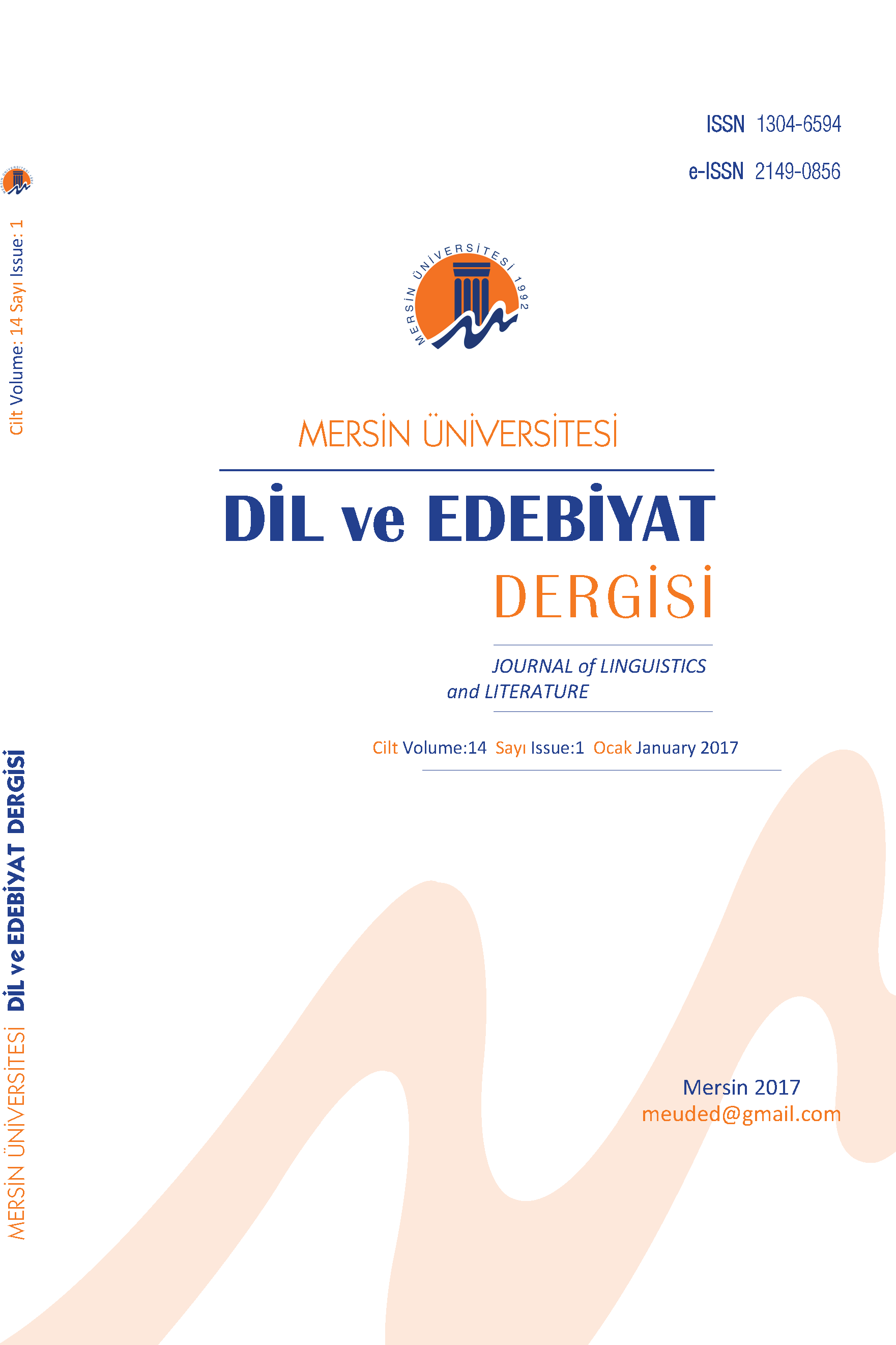Bare and Accusative Marked Direct Objects in Aspectual Composition of Turkish
Bu çalışma, görünüş kuramlarındaki (Krifka, 1989; Dowty, 1991; Tenny, 1994) savların tersine Türkçede artımlı-konu yüklemlerinin (incremental theme predicates) nesneleri çıplak adöbekleri (bare noun phrases) olduğunda, yüklemin anlattığı olayın hedefte-bitişli (telic) okunabileceğini; aynı tür yüklemlerin nesneleri durum ekli, sayılabilir adöbekleri olduğunda, yüklemin anlattığı olayın hem hedefte-bitişli hem de hedefte-bitişsiz (atelic) yorumlanabileceğini göstermektedir. Ayrıca bu yazı, artımlı konu yüklemlerinin hedefte-bitişlilik yorumlarında sadece dilsel araçları kullanmanın yeterli olmadığını, kullanımbilimsel, bağlam ve dünya bilgisine dayalı açıklamaların görünüş yorumlarındaki yerini de tartışmaktadır.
Anahtar Kelimeler:
-
___
- Aksan, Y. 2004. Event structure, scale structure and the representation of selected accomplishment verbs in Turkish and Korean. S.O. Lee et.al. (Eds.) Inquiries into Korean Linguistics I. Seoul: Thaehaksa, 261-280.
- Aydemir, Y. 2004. Are preverbal bare Ns syntactic arguments? Linguistic Inquiry 35 (1): 465-474.
- Dede, M. 1986. Definitness and referentiality in Turkish verbal sentences. D.I. Slobin & K. Zimmer (Eds.) Studies in Turkish Linguistics. Amsterdam: John Benjamins, 147-164.
- Dowty, D. 1991. Thematic proto-roles and argument selection. Language 67: 547-619.
- Erguvanlı, E. 1984. The function of word order in Turkish grammar. Berkeley: University of California Press.
- Erguvanlı-Taylan, E. & K. Zimmer 1994. Case marking in Turkish: Indefinite object constructions. Berkeley Linguistic Society 20, 547-552.
- Filip, H. 2001. Nominal and verbal semantic structure: Analogies and interactions. Language Science 23: 453-501.
- Hay, J., C. Kennedy & B. Levin 1999. Scalar structure underlies telicity in ‘degree achievements’. SALT 9: 124-144.
- Johanson, L. 1977. Bestimmtheit und Mitteilungsperspektive im türkischen Satz. Linguistische Beitrage zur Gesamtturkologie. Budapest: Akademiai Kiado, 225-242.
- Jackendoff, R. 1996. The proper treatment of measuring out, telicity, and perhaps even quantification in English. Natural Language and Linguistic Theory 14: 305-351.
- Krifka, M. 1989. Nominal reference, temporal constitution and quantification in event semantics. R. Bartsch et.al. (Eds.) Semantics and contextual expression. Dordrecht: Foris, 75-115.
- Nilsson, B. 1985. Case marking semantics in Turkish. Stockholm: Department of Linguistics.
- Nilsson, B. 1986. Object incorporation in Turkish. A. Aksu-Koç & E. Erguvanlı Taylan (Eds.) Proceedings of the Turkish linguistics conference. İstanbul: Boğaziçi University Press, 113-128.
- Öztürk, B. 2005. Case, referentiality and phrase structure. Amsterdam: John Benjamins.
- Rothstein, S. 2004. Structuring events. Oxford: Blackwell.
- Schroeder, C. 1999. The Turkish nominal phrase in spoken discourse. Wiesbaden: Harrassowitz.
- Sioupi, A. 2002. (A)telicity and (non)-delimitedness with (bare)count nouns in Greek. Abstract of Chronos 5, Groningen.
- Smollett, R. 2005. Quantized direct objects don’t delimit after all. H.J. Verkuyl, H. de Swart & A. van Hout (Eds.) Perspectives on aspect. Dordrecht: Springer, 41-59.
- Tura, S. 1986. Definitness and referentiality in Turkish nonverbal sentences. D.I. Slobin & K. Zimmer (Eds.) Studies in Turkish Linguistics. Amsterdam: John Benjamins, 165-194.
- Turan, Ü. D. 1998. Zero object arguments and referentiality in Turkish. L. Johanson (Ed.) The Mainz Meeting: Proceedings of the seventh international conference on Turkish linguistics. Wiesbaden: Harrassowitz, 154-182.
- Tenny, C. 1994. Aspectual roles and the syntax-semantics interface. Dordrecht: Kluwer.
- Tatevosov, S. 2002. The parameter of actionality. Linguistic Typology 6 : 317-401.
- ISSN: 1304-6594
- Yayın Aralığı: Yılda 2 Sayı
- Başlangıç: 2004
- Yayıncı: Mersin Üniversitesi
